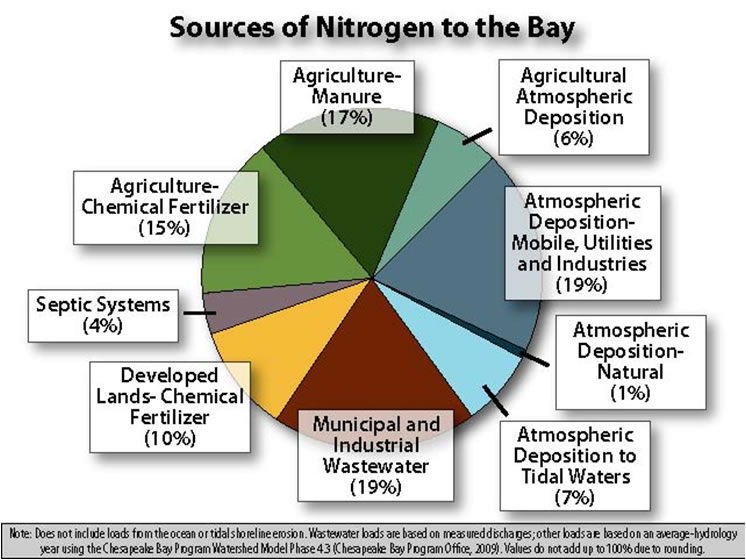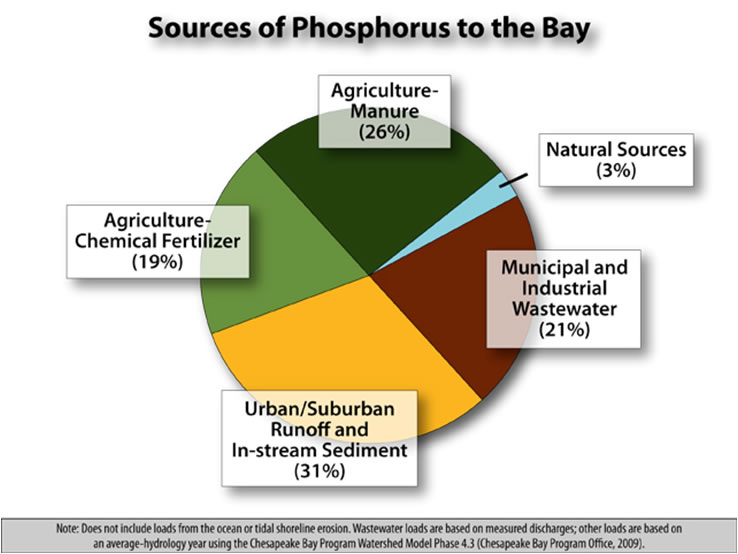Nutrient Management
Crop farming is responsible for much of the nutrient load to the Bay. Because of this, it is important that farms are managed in a way that optimizes a balance between economic feasibility, nutrient output, and crop production.
To read more about how nutrients harm the Bay, visit the U.S. Fish and Wildlife page on Nutrient Pollution or check out the Chesapeake Bay Program's page on Bay pollutants.
Unfortunately, agriculture produces a significant load of nitrogen and phosphorous runoff than ends up in in the Bay, severely altering the Bay's health. The Chesapeake Bay Program broke down the individual sources of nutrient pollution to the Bay, shown in the figures below:


As shown in the figure above, agriculture is the largest single source of phosphorous to the Bay and one of the largest for nitrogen. Specifically, nutrients from chemical fertilizers used in crop farming contribute to nearly half of the agricultural nutrient load.
There are several ways that farmers attempt to reduce their impact on the Bay. The most popular nutrient management strategies involve using Best Management Practices (BMPs) that attempt to reduce nutrient runoff. Some choose to farm using more sustainable methods, with less yield.
